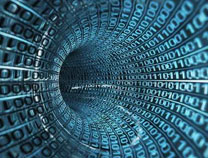Have you ever wondered what operating systems are used by big wig scientists at CERN and Fermilab? They used to use Scientific Linux, but that was retired. Here's what they use now.
Cern RSS
In an international collaboration, CERN has 3D-printed plastic scintillators for neutrino oscillation experiments. The technique is precise and cost-effective. Results demonstrate proof of concept.
CERN has contributed 10,000 computer cores from its main data center to the Folding@home project becoming the 87th biggest contributor. The project now has almost 2.5 exaFLOPS of computing power.
Researchers have trained an artificial neural network to identify atypical and ephemeral experimental signatures resulting from proton-proton collisions inside the Large Hadron Collider at CERN.
Workers have just connected the LHC to its successor, the High-Luminosity LHC. However, the end of Long Shutdown 2 has been extended to May 2021 and Run 3 has been extended by one year to 2024.
Leveraging the downtime for the Large Hadron Collider, the general public will be able to explore the laboratory and partake in over 150 activities planned by CERN on 14 and 15 September.
The organisation behind the world's largest particle accelerator has launched the Microsoft Alternatives project as it looks to move away from Microsoft software in favour of open source alternatives.
Based on recent measurements of the magnetic moment of the antiproton, physicists conclude that our universe should not exist with more experiments underway; plus Einstein's theory on happiness.
This week an incredibly well-preserved nodosaur fossil was unveiled, a new accelerator was launched at CERN, SpaceX tested a Falcon Heavy rocket, and Microsoft Research revealed Project Emma.
SpaceX has launched its first rocket carrying a classified military payload for the US, an astronomer suggests we should search for extinct alien life in our solar system, and the LHC has restarted.
Scientists at the world's most advanced physics laboratory, CERN, have embarked on a project that seeks to preserve the original hardware and software used to give birth to the World Wide Web.
A copy of the first website ever created has been preserved by CERN, the organization where the first web page was launched on a server way back in 1991. The preserved page comes from 1992.












_medium.jpg)











